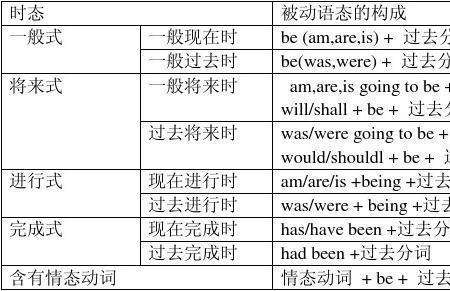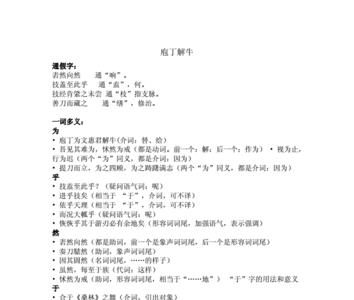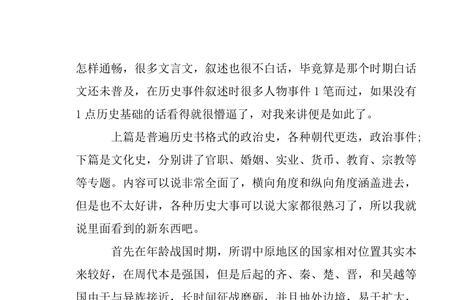1、一般现在时:am/is/are done
You are required to do this.
2、一般过去时:was/were done
The story was told by her.
3、一般将来时:shall/will be done
The problem will be discussed tomorrow.
4、一般过去将来时:should/would be done
He said that the trees would be planted soon.
5、现在进行时:is/am/are being done
The question is being discussed in the meeting room.
6、过去进行时:was/were being done
The new road was being made.
7、现在完成时:has/have been done
The novel has been read.
8、过去完成时:had been done
He said that the work had been finished.
9、将来完成时:shall/will have been done
The project will have been completed before July.
二、被动语态的构成
被动语态由“助动词be+及物动词的过去分词”构成.人称、数和时态的变化是通过be的变化表现出来的.现以teach为例说明被动语态在各种时态中的构成.
被动语态的用法
(1)不知道或没有必要说明动作的执行者是谁.
例如:
Some new computers were stolen last night.
一些新电脑在昨晚被盗了.(不知道电脑是谁偷的)
This book was published in 1981.这本书出版于1981年.
(2)强调动作的承受者,而不强调动作的执行者.
例如:the window was broken by Mike.窗户是迈克打破的.
This book was written by him.这本书是他写的






